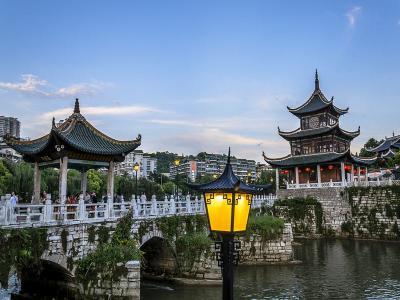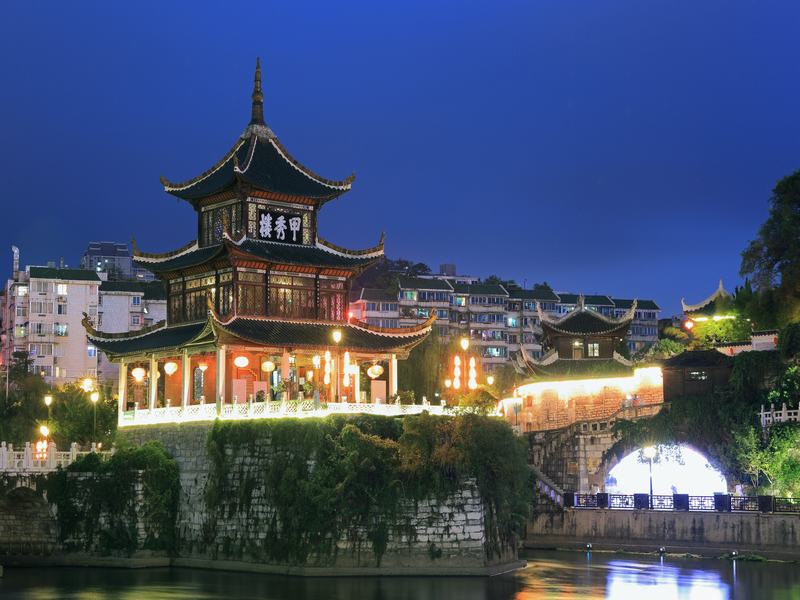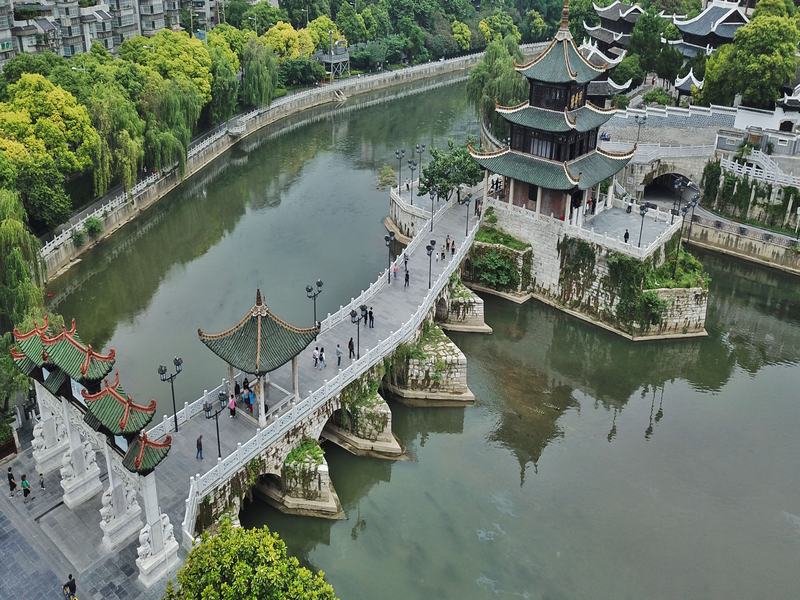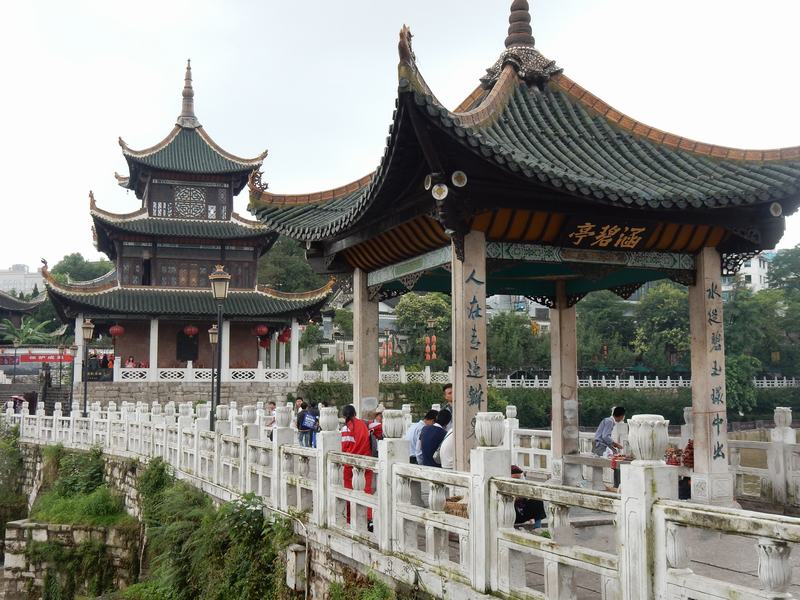Jiaxiu Pavilion
The Jiaxiu Pavilion is a symbol of Guiyang city, and a key historic monument under state protection. Standing on the huge Turtle Rock in the Nanming River, this traditional Chinese-style structure was built in 1597, and is connected to the banks on both sides of the river by the Fuyu Bridge. It was built by Jiang Dongzhi, the governor of Guizhou province, which was named Jiaxiu Tower to encourage local scholars to win success in the imperial examinations.
Jiaxiu Pavilion has three stories, three eaves, four corners and a dome, with a structure that is unique in early architecture of China. This feature makes the tower famous and enhances its appreciation, attracting tourists and architects to get a close look at it. The tower is around 20 meters high and has upturned eaves supported by 12 stone columns, protected by white carved stone rails. People can enjoy the scenery around the tower, with the 90-m Fuyu Bridge looking like a dragon lying on the water. It passes through the Tower and and has the Hanbi Pavilion on it, with Hanbi Pond and the Shuiyue Platform. To the south of the bridge is the Cuiwei Tower.
Many authors wrote poems on the Jiaxiu Pavilion, one of the most popular of which is the 206-character couplet by Liu Yushan, of the Qing Dynasty. It is 26 characters longer than the "longest couplet" in the world, on the Daguan Tower, in Kunming, Yunnan province. Liu's couplet describes the geography and other features of Guiyang, a mountain city. The tower unites picturesque mountains and brilliant water with its exclusive beauty and, when evening falls and the bright lights come on, you'll be amazed if you visit it.
The long couplet gives the history of the tower and its location then details the scenery around it, with the author expressing his love ascending the Tower and appreciating the scenery.

- Qingman Miao Village
- Double Breast Peaks
- Wanfeng Lake
- Wanfenglin
- Malinghe River Canyon
- Xijiang Qianhu Miao Village
- Jiaxiu Pavilion
- Qianling Park
- Huangguoshu Scenic and Historic Interest Area
- Dragon Palace
- Zhaoxing Dong Village
- Basha Miao Village
- Shiqiao Village
- Upper Langde Miao Village
- Twenty-four Turn Road
- 100-li Azalea National Forest Park
- Zhiiin Cave
- Fanjing Mountain
- Tianlongtunbao Ancient Village
- Suoga Ecological Museum
- Qingyan Ancient Town
- Hejia Village
- Liping Dongxiang


